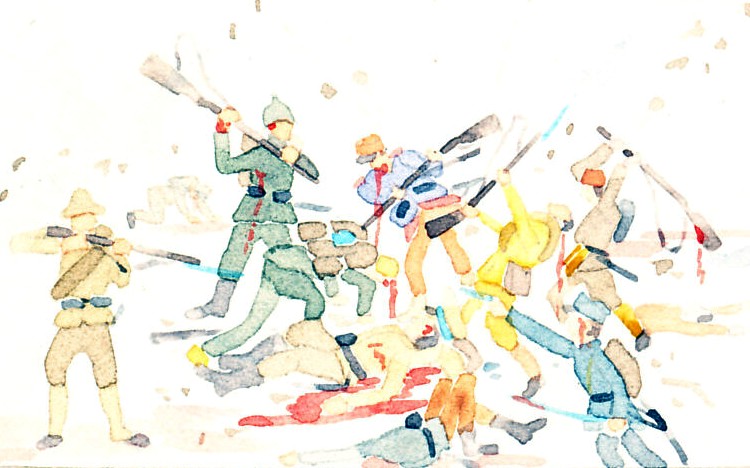German postcard map of the Western Front in Flanders, looking south and including Lille, Arras, Calais, and Ostend. In the Battle of the Yser in October, 1914, the Belgian Army held the territory south of the Yser Canal, visible between Nieuport, Dixmude, and Ypres (Ypern). Further north is Passchendaele, which British forces took at great cost in 1917.

Der Kanal
Straße von Calais
The English Channel and the Strait of Calais
Reverse:
Panorama des westlichen Kriegsschauplatzes 1914/15 Von Arras bis Ostende.
Die Panorama-Postkartenreihe umfaßt mit ihren 9 Abschnitten Nr. 400 bis 408 den gesamten westlichen Kriegsschauplatz von der Schweizer Grenze bis zur Nordseeküste.
Panorama of the western theater of operations 1914/15 from Arras to Ostend. The panoramic postcard series includes nine sections, with their No. 400-408 the entire western battlefield from the Swiss border to the North Sea coast.
Nr. 408
Wenau-Postkarte Patentamtl. gesch.
Other views:
Larger, Larger, Back
